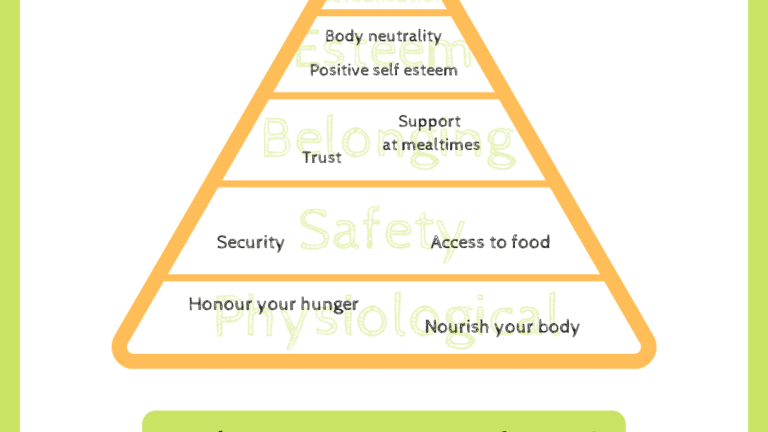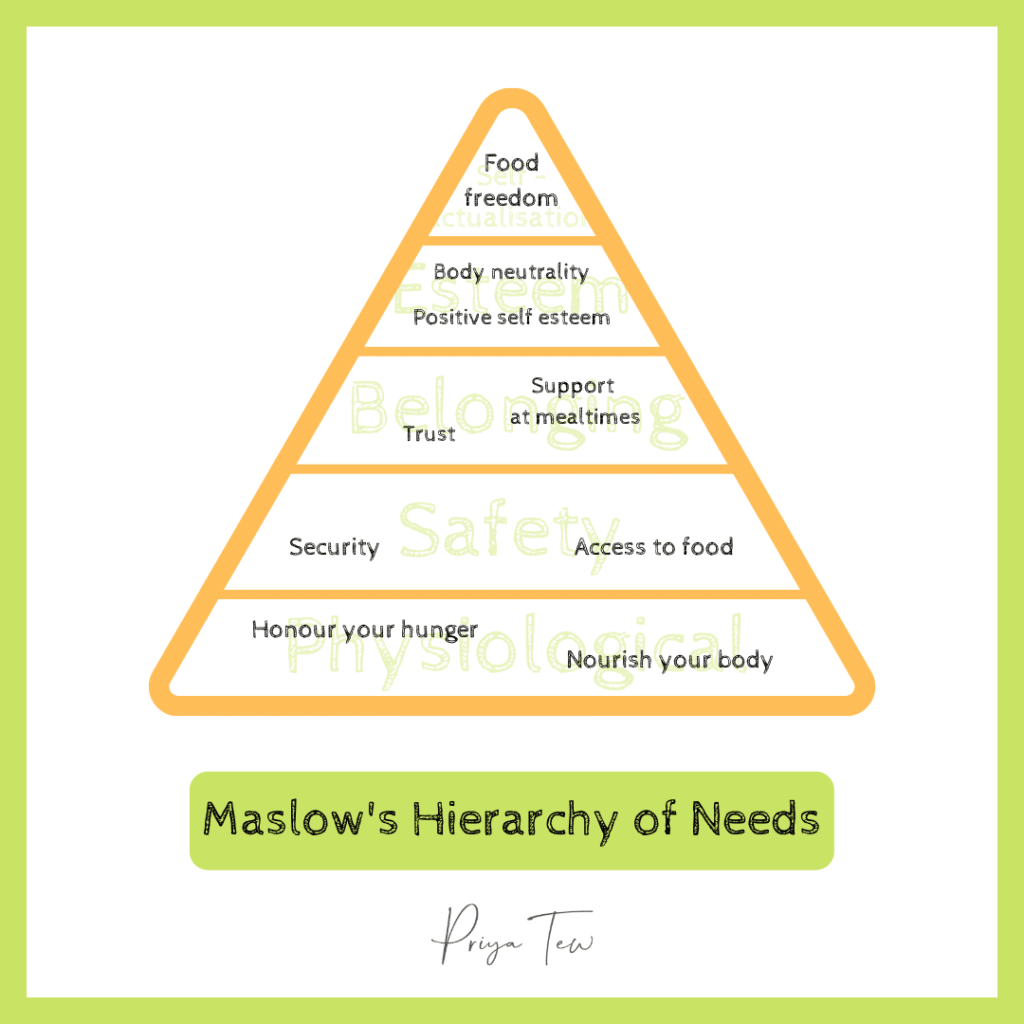[ad_1]

Maslow’s Hierarchy of Needs is a theory that we need to meet our basic needs before we can move on to more advanced ones. It was first published in the 1943 paper “A Theory of Human Motivation”.
The 5 needs from the original paper are:
- Physiological needs (most basic)
- Safety needs
- Love and belonging
- Self-esteem
- Self-actualisation (most advanced)

Maslow’s Hierarchy and eating disorders
We can use Maslow’s Hierarchy when working on eating disorder recovery or disordered eating behaviours. To reach recovery and food freedom, you may need to work on nourishing your body and honouring your hunger and fullness cues first. In practice, the hierarchy might look like this:
- Honour your hunger (most basic)
- Security and access to foods
- Feeling supported at meal times and trusting those around you
- Having positive self esteem and building body neutrality
- Food freedom! (most advanced)
Making sure that you feel safe and secure in your food environment and that you have a supportive network around you is also key. This doesn’t necessarily have to mean your family, but having supportive people around you (and NOT judging your choices) can be really crucial for improving your relationship with food and your body.
If recovery feels overwhelming, take things step-by-step and consider if other basic needs are being met. Your hunger hormones may not be reliable if your are underweight and not menstruating (if you are female and not using the contraceptive pill). Take a look at this post here for more. Working on regular eating where you are having 3 meals and 3 snacks a day will help your body get into a routine that it can trust. Starting to introduce other foods that provide additional nutrients so your body is getting all the nutrition it needs will also help replenish and restore.
Working with a dietitian who can guide you and educate on this can be super helpful.
[ad_2]
Source link